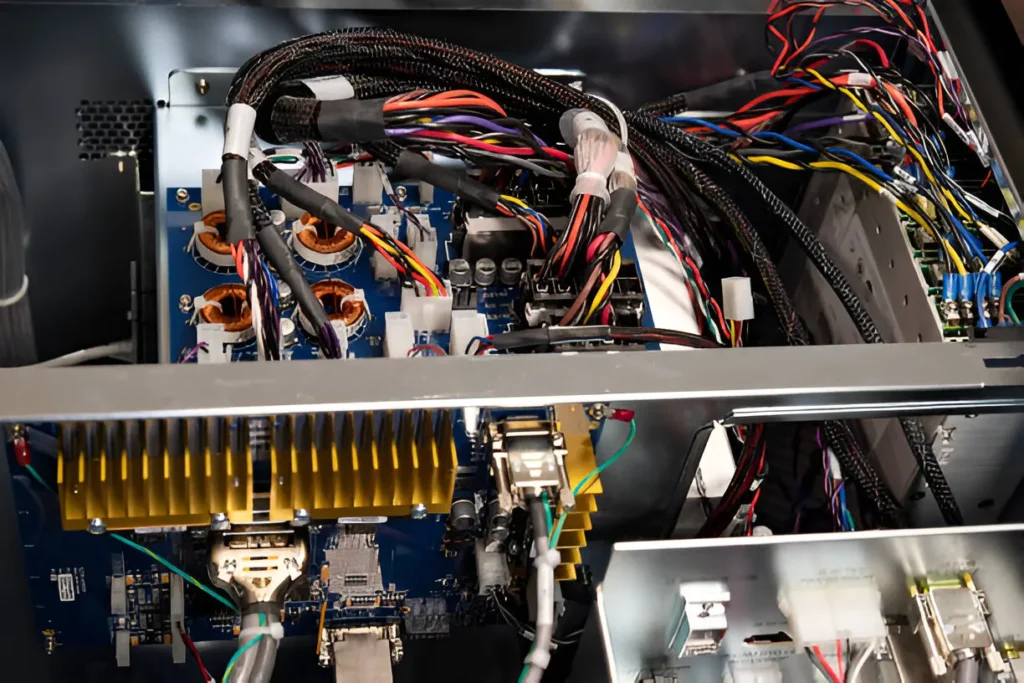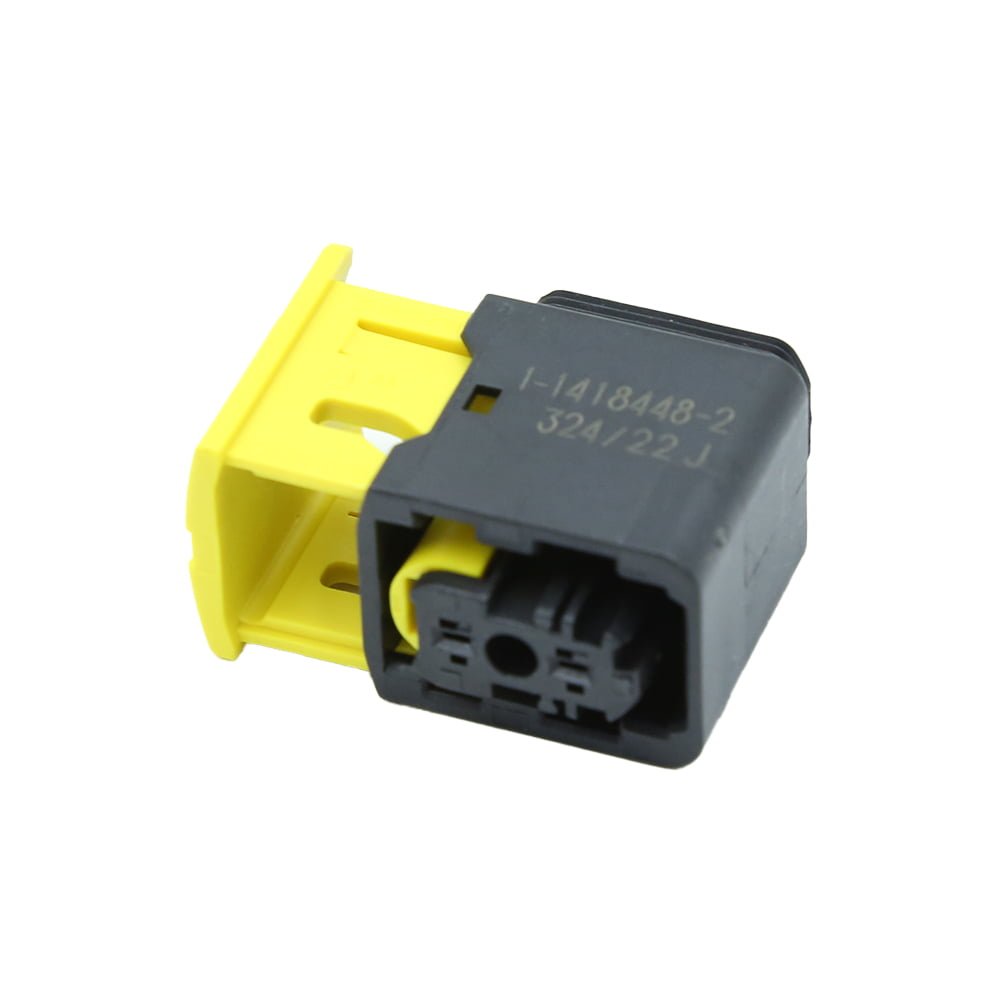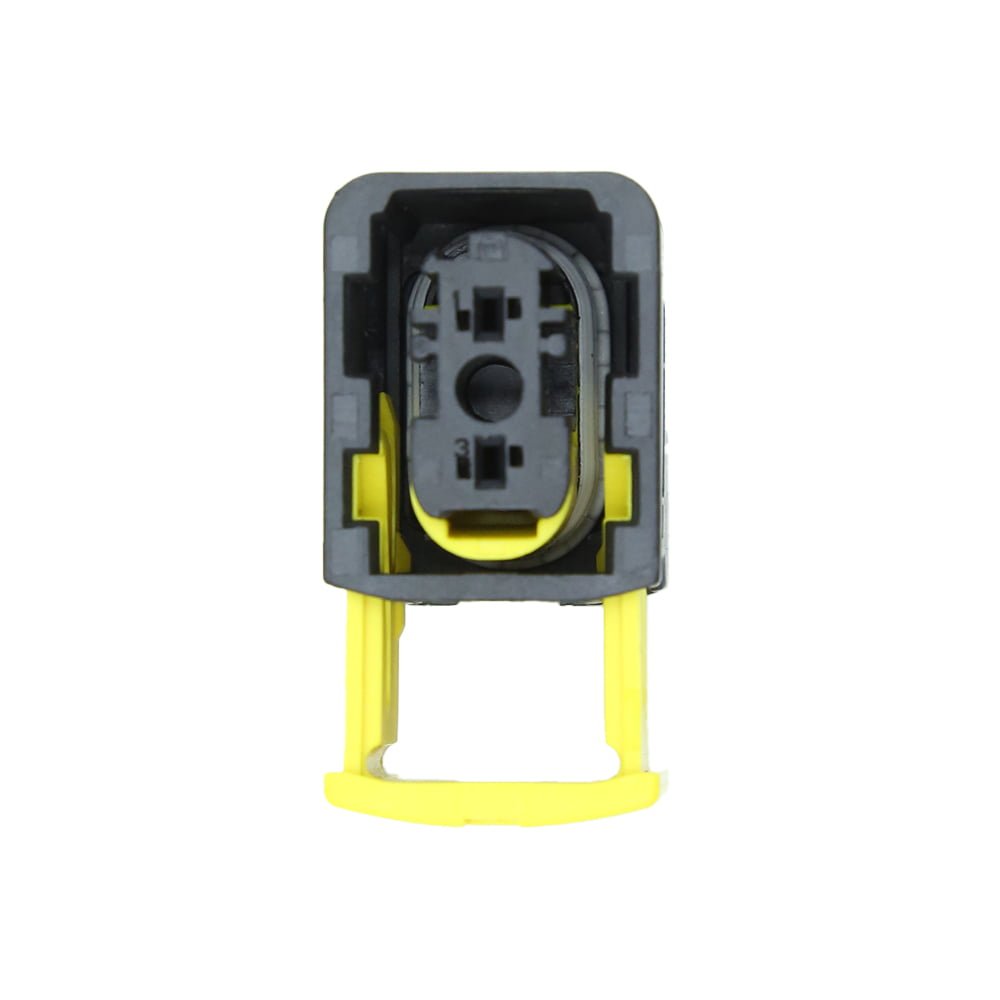What is a 2-Pin Automotive Connector
A 2-pin automotive connector is a vital component in a vehicle’s electrical system, used to establish a reliable connection between two electrical parts. These connectors are typically responsible for transmitting signals or power, making them essential in systems like engine control, lighting, and sensors. Their straightforward design allows them to function effectively under a variety of conditions, from the heat of an engine bay to the vibrations of rough terrain.
One reason for the popularity of 2-pin automotive connectors 1-1418448-2 is their ease of use and maintenance. When you need to repair or replace parts in your vehicle’s electrical system, tools like the automotive electrical connector removal tool and automotive connector pin removal tool make it simple to disassemble and reinstall these connectors. This ease of maintenance is crucial for mechanics and DIY enthusiasts alike.
Product Type Features
- Connector Shape : Rectangular
- Centerline (Pitch) : 4 mm [ .157 in ]
- Connector System : Wire-to-Wire
- Connector & Housing Type : Housing for Female Terminals
- Sealable : Yes
- Connector & Contact Terminates To : Wire & Cable
- Primary Locking Feature : Integrated in Housing
- Mixed & Hybrid Connector : No
Main Components and Functions of a 2-Pin Automotive Connector
A 2-pin automotive connector is made up of several key components, each playing a role in ensuring the stability and safety of the electrical connection:
- Contacts: The core of the electrical connection, usually made from metal. The contacts consist of male pins and female sockets that fit tightly together to transmit current or signals. The quality of these contacts can significantly affect performance—gold-plated contacts, for example, offer superior conductivity and corrosion resistance.
- Housing: The housing protects the internal contacts from physical damage and environmental factors like dust or moisture. It also ensures proper alignment between the plug and socket, preventing poor connections that could lead to electrical failure.
- Seals: Many 2-pin connectors include seals to block out contaminants such as water or dust. This feature is particularly important in vehicles that operate in harsh environments—think off-road trucks or construction vehicles where mud, rain, and debris are constant challenges.
- Locking Mechanism: The locking mechanism ensures that once connected, the plug stays securely in place. This prevents accidental disconnections caused by vibrations or movement, which are common in automotive applications.
These components work together to ensure that 2-pin automotive connectors remain reliable even under extreme conditions such as high temperatures, vibrations, and exposure to moisture. This makes them ideal for use in automotive bulkhead connectors and other demanding applications.
How a 2-Pin Automotive Connector Works
The operation of a 2-pin automotive connector is straightforward but effective. When the male pin is inserted into the female socket, it creates a tight electrical connection between the contacts, allowing for the transmission of signals or power. This design ensures stable performance while allowing for quick disconnection and reconnection—an essential feature for parts that require frequent maintenance.To maintain reliability over time, many 2-pin connectors are designed with waterproofing features. For example, vehicles that operate in wet or humid environments often require connectors with high IP (Ingress Protection) ratings like IP67. This means they are dust-tight and can withstand immersion in water up to a certain depth. Such features ensure that automotive wire connectors can continue functioning even when exposed to harsh conditions.
How to Choose the Right Connector for Different Models
Selecting the right 2-pin automotive connector involves considering several critical factors:
- Voltage and Current Requirements: Different vehicles have varying electrical demands. For instance, high-performance sports cars may require connectors capable of handling higher power loads due to their more advanced systems. On the other hand, standard family sedans might only need basic configurations.
- Environmental Conditions: Vehicles exposed to extreme temperatures, humidity, or chemicals need connectors with robust sealing and durability features. An automotive electrical connector types chart can be a valuable resource when selecting products suited for these conditions.
- Material Selection: Choosing corrosion-resistant materials like gold-plated or tin-plated contacts can significantly extend the lifespan of your connectors by preventing oxidation over time. Additionally, housing materials should be impact-resistant and capable of withstanding high temperatures to meet various vehicle requirements.
- Installation Tools: Using specialized tools like automotive electrical connector pliers ensures precision during installation and minimizes issues caused by improper handling.
By considering these factors carefully, you can choose the most suitable 2-pin automotive connector for different vehicle models, ensuring long-term reliability and performance across various environments.
How to Ensure Reliability of Automotive Connectors in Harsh Environments
Ensuring that your 2-pin automotive connectors remain reliable in harsh environments requires both careful selection and ongoing maintenance:
- Use High-Quality Materials: Opting for materials that resist corrosion, high temperatures, and vibration—such as gold-plated contacts or high-strength plastic housings—can dramatically improve performance under extreme conditions.
- Regular Maintenance: Periodic inspections using tools like automotive electrical connector removal tool and automotive connector pin removal tool are essential for identifying any signs of wear or corrosion before they lead to failure. Regular maintenance not only extends the life of your connectors but also helps prevent unexpected breakdowns.
- Protective Design: Choosing connectors with IP67 or higher ratings ensures that they are protected against dust ingress and temporary immersion in water. For vehicles operating in rugged environments—such as off-road trucks—automotive bulkhead connectors often come equipped with these protective features to withstand exposure to mud, rainwater, and other harsh elements.
By following these steps, you can significantly enhance the reliability of your 2-pin automotive connectors in even the most challenging conditions.



